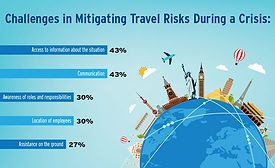Management
Creating the GSOC: 4 Leading Examples of Successful Security Operations Centers
The Global Security Operations Center is not new, but its value is becoming widely recognized as a necessity to support business goals and operations.
March 1, 2017
Insider Tips for Building Your Cybersecurity Team
Don’t allow your biggest security vulnerability to be your lack of cybersecurity talent.
March 1, 2017
Keeping Employees Cyber-Aware Keeps the Enterprise Cyber-Secure
Improving employees’ cybersecurity awareness often hinges on communicating those initiatives into risks they understand.
March 1, 2017
Testing Technology for Integrated Security Success
Choosing the right security system components takes time, effort and, often, outside expertise.
March 1, 2017
Sign-up to receive top management & result-driven techniques in the industry.
Join over 20,000+ industry leaders who receive our premium content.
SIGN UP TODAY!Copyright ©2024. All Rights Reserved BNP Media.
Design, CMS, Hosting & Web Development :: ePublishing













